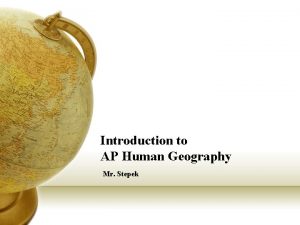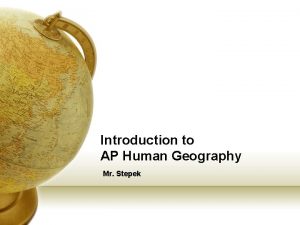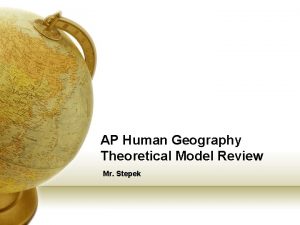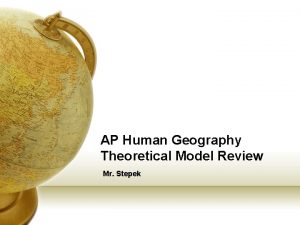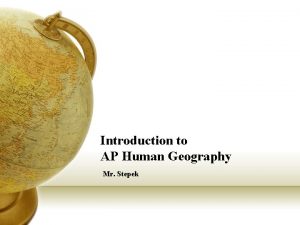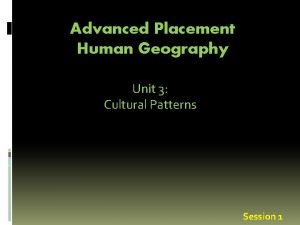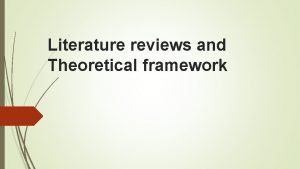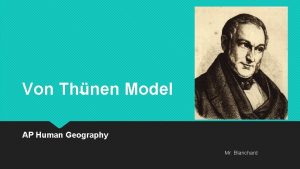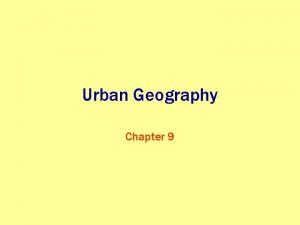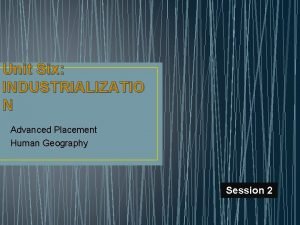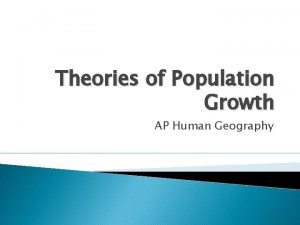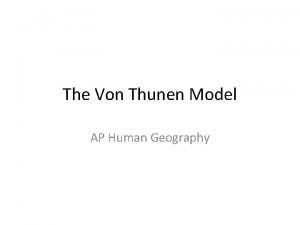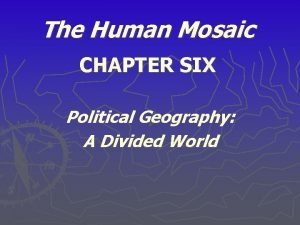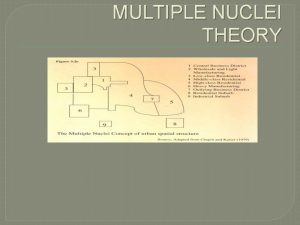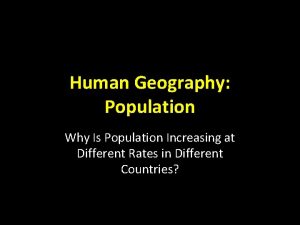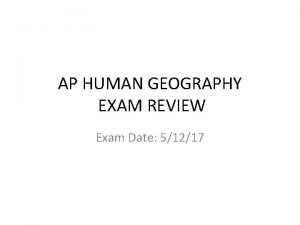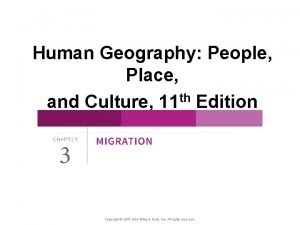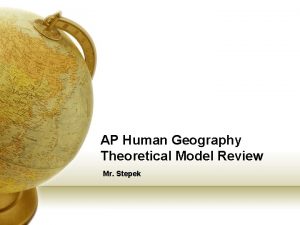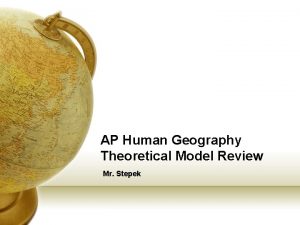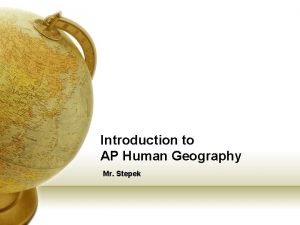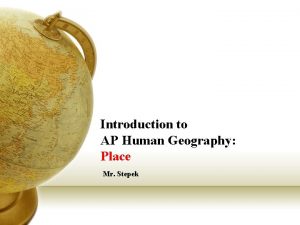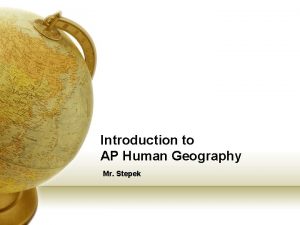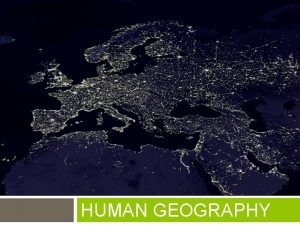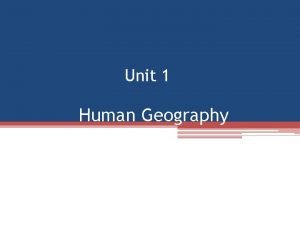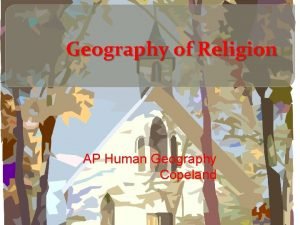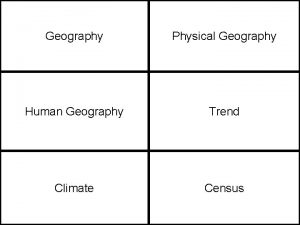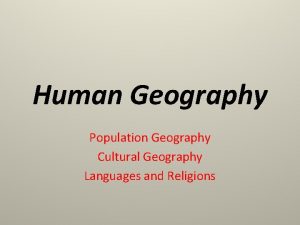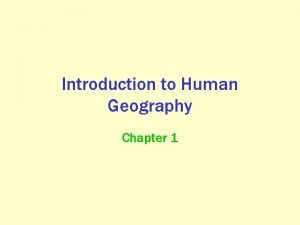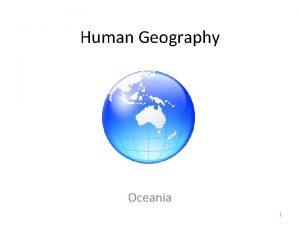AP Human Geography Theoretical Model Review Mr Stepek

























- Slides: 25

AP Human Geography Theoretical Model Review Mr. Stepek

Unit 6: Industrialization and Economic Development

World Systems Model Three-Tier Structure • Core-periphery model • Dominant advanced core exploits periphery • Applies globally • national/regional • Legacy of colonialism • Neo-colonialism Core : Processes that incorporate higher levels of education, higher salaries, and more technology Generates more wealth in the world economy Semi-periphery: Places where core and periphery processes are both occurring. Places that are exploited by the core but then exploit the periphery, serves as a buffer between core and periphery Periphery: Processes that incorporate lower levels of education, lower salaries, and less technology. Generates less wealth in the world economy

The Three-Tier System

Human Development Index (How is it measured? How is it distributed? )

Indicators of development • Human Development Index (HDI) • 4 factors used to measure (UN) and other factors considered in differentiating between MDC/LDCs: • Economic = • (1) gross national income (GNI) per capita • Other • Types of jobs, productivity, consumer goods • Social = • (2) mean years of schooling and • (3) expected years of schooling • Other (health and welfare measures) • Demographic • (4) life expectancy

Brandt’s Line (North-South Split)

Brandt’s Line MODIFIED (North-South Split)


Economic Development Models Self-sufficiency model • Govt. supports local industries through protectionism • Tariffs • Leads to inefficient businesses • Large bureaucracy • Corruption • Consumers pay more • No longer favored


Economic Development Models Self-sufficiency model • Govt. supports local industries through protectionism • Tariffs • Leads to inefficient businesses • Large bureaucracy • Corruption • Consumers pay more • No longer favored • • • Rostow’s International Trade “Take-Off” Model Raw materials exported elite gain profits infrastructure created innovation spreads economic diversification High consumption • wealth Inequity measured by GINI coefficient (modifies GDP)


Economic Development Models Self-sufficiency model • Govt. supports local industries through protectionism • Tariffs • Leads to inefficient businesses • Large bureaucracy • Corruption • Consumers pay more • No longer favored • • • Rostow’s International Trade “Take-Off” Model Raw materials exported elite gain profits infrastructure created innovation spreads economic diversification High consumption • wealth Inequity measured by GINI coefficient (modifies GDP) • Widely accepted • WTO, World Bank, IMF, structural adjustment loans • NGOs


United Nations Millenium Goals

Political Ecology • impact of laws and policy on the environment and environmental justice • Sustainable development • Cap and trade • International agreements • Kyoto Protocol (US vs. developing countries) • Paris Agreement

Weber’s Least Cost Theory of Industrial Location • Location determined by effort to minimize costs • Situation factors: transportation (bulk-gaining vs. bulk -reducing) • Site factors: labor, land, capital • Agglomeration: clustering of businesses to access common customers, advantageous site factors


Industry and Economic Development Sample FRQ #1

Industry and Economic Development Sample FRQ #1 Rubric

Industry and Economic Development Sample FRQ #1 Rubric

Industry and Economic Development Sample FRQ #1 Rubric

Industry and Economic Development Sample FRQ #2

Industry and Economic Development Sample FRQ #2 Rubric
 Mr stepek ap human geo
Mr stepek ap human geo Us cultural regions
Us cultural regions Dispersal ap human geography
Dispersal ap human geography Flows definition ap human geography unit 1
Flows definition ap human geography unit 1 Flow line maps
Flow line maps Ap human geography frq examples
Ap human geography frq examples 5 themes of geography ap human geography
5 themes of geography ap human geography Proruption ap human geography
Proruption ap human geography Migrant diffusion
Migrant diffusion Gni definition ap human geography
Gni definition ap human geography Literature review vs theoretical framework
Literature review vs theoretical framework Von thunen model ap human geography
Von thunen model ap human geography Clustered definition ap human geography
Clustered definition ap human geography Modernization model ap human geography
Modernization model ap human geography Population distribution
Population distribution Ap human geography von thunen model
Ap human geography von thunen model Who developed the multiple nuclei model
Who developed the multiple nuclei model Cleavage model ap human geography
Cleavage model ap human geography Multiple nuclei model year
Multiple nuclei model year Deportation definition ap human geography
Deportation definition ap human geography Demographic transition model ap human geography
Demographic transition model ap human geography Cbr ap human geography
Cbr ap human geography Cbd models
Cbd models Demographic transition model ap human geography definition
Demographic transition model ap human geography definition The arrangement of a phenomenon across earth's surface is
The arrangement of a phenomenon across earth's surface is Kinship links ap human geography definition
Kinship links ap human geography definition
